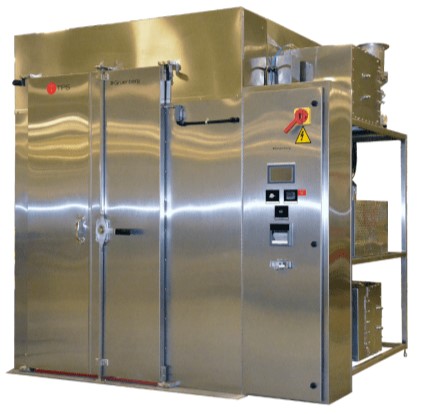Pyrogens and Endotoxins, Depyrogenation Methods and Equipment
Pyrogens are substances that can cause fever when introduced into the body. They are typically derived from the cell walls of bacteria or from certain viral particles. Pyrogens can trigger an immune response in the body, leading to the release of fever-inducing substances called pyrogenic cytokines.
Endotoxins are a specific type of pyrogen that are found in the outer membrane of Gram-negative bacteria. They are lipopolysaccharides (LPS) and can cause a strong immune response when introduced into the body. Endotoxins are known to induce fever, activate the immune system, and can have adverse effects on human health.
In the pharmaceutical and medical device industry, the presence of pyrogens and endotoxins is a concern, especially in products that are intended for injection or implantation. Even very low levels of pyrogens or endotoxins can cause adverse reactions in patients, such as fever, inflammation, or sepsis.
To ensure product safety, pyrogen and endotoxin testing are performed during the manufacturing process. These tests involve measuring the presence and concentration of pyrogens or endotoxins in raw materials, in-process samples, and final products. Various methods are used for testing, including the Limulus Amoebocyte Lysate (LAL) assay, which is a common method for detecting endotoxins derived from Gram-negative bacteria.
Regulatory agencies, such as the United States Pharmacopeia (USP), have established limits for acceptable levels of pyrogens and endotoxins in pharmaceutical products. Compliance with these limits ensures that the products are safe for patient use.
Depyrogenation Methods
Pyrogens, particularly endotoxins derived from Gram-negative bacteria, are heat-stable and cannot be easily destroyed by typical sterilization methods such as heat or filtration. The most common method for depyrogenation is using dry heat or moist heat sterilization.
-
Dry Heat Depyrogenation:
This method involves exposing the items to high temperatures for a specific duration to effectively reduce or eliminate pyrogens. Dry heat ovens or tunnels are typically used for this purpose. The recommended temperature for dry heat depyrogenation is usually around 250-300°C, and the items are exposed to this temperature for a defined period, typically ranging from 30 minutes to several hours.

-
Moist Heat Depyrogenation:
Moist heat depyrogenation, also known as steam sterilization or autoclaving, utilizes high-pressure steam to achieve sterilization and pyrogen reduction. The combination of heat and moisture helps in the inactivation of pyrogens. The typical operating conditions for moist heat depyrogenation are 121-134°C at a pressure of 15-30 psi, with a sterilization duration of around 15-30 minutes.
Both dry heat and moist heat depyrogenation methods have their advantages and limitations. Dry heat depyrogenation is suitable for heat-resistant items such as glassware and certain metal components, while moist heat depyrogenation is more commonly used for heat-stable materials and equipment that can withstand the moisture associated with steam sterilization.
Depyrogenation Equipment
There are several types of equipment commonly used for depyrogenation in pharmaceutical and medical device industries. The choice of equipment depends on the specific requirements of the process and the items being depyrogenated. Here are some commonly used depyrogenation equipment:
-
Dry Heat Ovens:
Dry heat ovens, also known as depyrogenation ovens, are designed to provide controlled high temperatures for the removal of pyrogens. They are typically used for depyrogenation of glassware, metal equipment, and heat-resistant materials. Dry heat ovens operate at elevated temperatures, typically ranging from 200°C to 400°C and require a defined exposure time to achieve effective pyrogen reduction.
-
Autoclaves:
Autoclaves are widely used for sterilization and can also be utilized for depyrogenation. Moist heat autoclaves use high-pressure steam to achieve sterilization and pyrogen reduction. They are commonly used for depyrogenation of heat-stable materials, such as reusable glassware, stainless steel equipment, and certain medical devices. Autoclaves operate at temperatures ranging from 121°C to 134°C and require a defined exposure time to ensure effective depyrogenation.
-
Tunnel Sterilizers:
Tunnel sterilizers, also known as continuous sterilizers, are used for large-scale depyrogenation of pharmaceutical products or containers. They are designed to pass the items through a temperature-controlled tunnel where hot air is circulated to achieve depyrogenation. Tunnel sterilizers are commonly used in the pharmaceutical industry for depyrogenation of vials, ampoules, and other container systems.
-
In-line Depyrogenation Systems:
In-line depyrogenation systems are designed to integrate into a production line to achieve continuous depyrogenation of products. These systems typically utilize high-temperature zones or methods such as dry heat or steam to remove pyrogens from products as they pass through the system. In-line depyrogenation systems are commonly used for depyrogenation of pharmaceutical solutions, parenteral products, and medical devices.